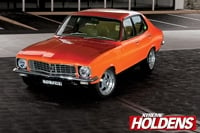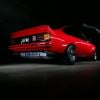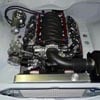G'day Adam,
Its not easy to explain and covering this subject in two or three sentences so I will try an keep it simple.
This problem is more common than many people realise. I have seen this problem hundreds of times and is very common in trucks & 4x4 vehicles with solid steer axles, but can also occur in independent front suspension vehicles as you have found out first hand.
I referred to this phenomenon as wheel slap because that is basically what it is. If you could see the front wheels when this shake starts both front wheel continue to slap left & right. I have seen some vehicles wheels slap from side to side by up to 6". it looks very scary from the outside to. I have experience its effects first hand on many occasions and one that almost killed me in a truck, so savage that it leapt from one lane to another on a back road almost breaking my keg as it through me out of the seat several times.
The shaking generally occurs at speeds over 60-70kph, and when the shaking starts backing off the throttle seems to make the problem worse till the speed is reduced to about half of the initial shaking speed. As you have also mentioned the shake is quickly reduced by applying the brakes, this is due to the front wheels loading up and possibly also toeing the wheels out eliminating the side ways slap. It just takes the right conditions for the slap to occur and that's why you can drive if for half an hour or more before the problem starts. The problem also occurs more often on smother roads rather than really rough roads.
The initial slap is started when one or both wheels deviate from the centre line position either by a bump or the tyres trying to follow a small rut in the road, then the wheels kick to the opposite side and very quickly the violent shake/slap starts.
There are quit a few things that can contribute to this problem or a group of faults that all add up to the end result of wheel slap.
Any movement in the steering rack laterally or steering column free play will allow the front wheels to freely move left or right from the steering centre line. (shake starts) out of round tyres can cause the same result causing the wheels to deviate.
The five common areas we carried out repairs to eliminate this problem are, listed from most common to least.
1) Movement/free play in steering rack: (lateral play).
2) Out of round wheel rims or tyres, (at speeds the tyres start to partially hop off the road surface initialising wheel slap): check tyres for lumps & bumps at the tread area, buckled rims and deformation of tyre or band separation, excessive out of balance wheels from inner to outer rim beads.
3) Excessive play in steering column from steering wheel to rack input shaft. (double check steering shaft unis, lock pins, rag joint and steering wheel nut.
4) Excessive movement in suspension bushes or components. (also check if you have any wheel bearing movement that the outer bearing cones aren't loose in the hubs or spinals worn at bearing mountings position).
5) Wheel alignment: (high caster angles can contribute to the problem but this shouldn't be a problem in a Torrie.
I would first get someone to move the steering wheel 6 inches from left to right and check for any free play in any components with the vehicle on the ground. Next only move the steering wheel from side to side to see how far the steering wheel can be moved before the front wheels start to turn.(very important)
Jack up the car and check for any movement in components and run your hand around the tyre tread area and check for deformation of the tyres case. Spin the front wheels and check for run out at the tyre contact to road area. Checking for either side ways or up and down run out. Putting a block close to the tyre and spin the wheel and check the gap is the easiest.
We notice this problem occurred sometimes after a wheel alignment because the vehicle now runs true down the road without scrub or load on the steering that some ruts or bumps can set it off. In most cases just adjusting the play out of the steering box or drag rod was all it needed to eliminate the problem. If that didn't cure the fault we than carried out a on vehicle wheel balance which included run out checks. The two above procedures cured around 75% of the affected vehicles.
Lastly fitting a power steering rack wouldn't go a stray. LOL.


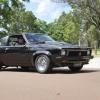


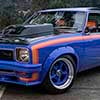
 View Garage
View Garage

